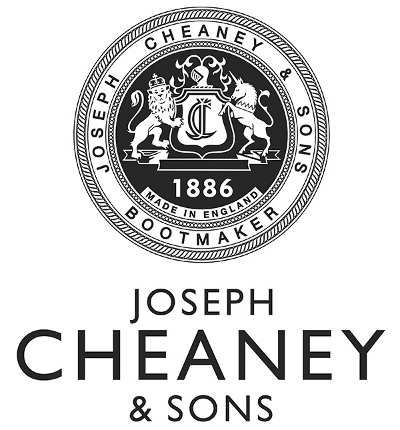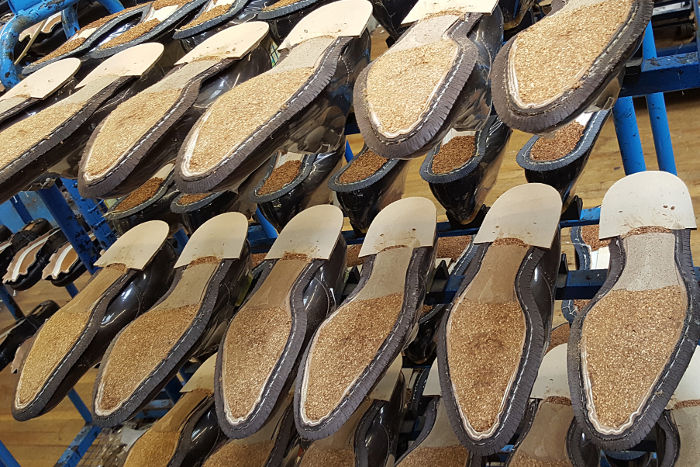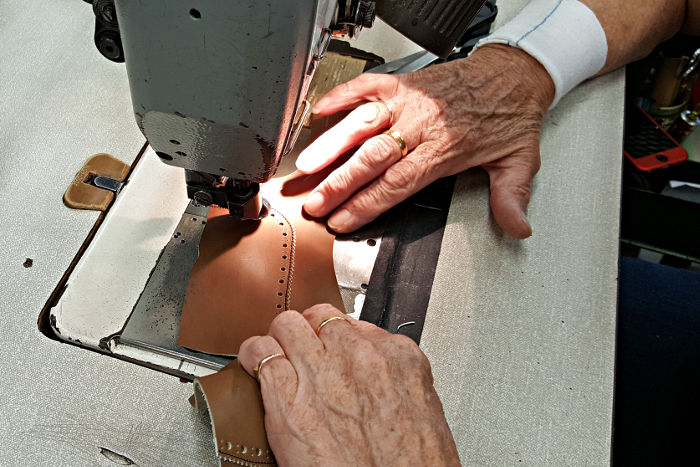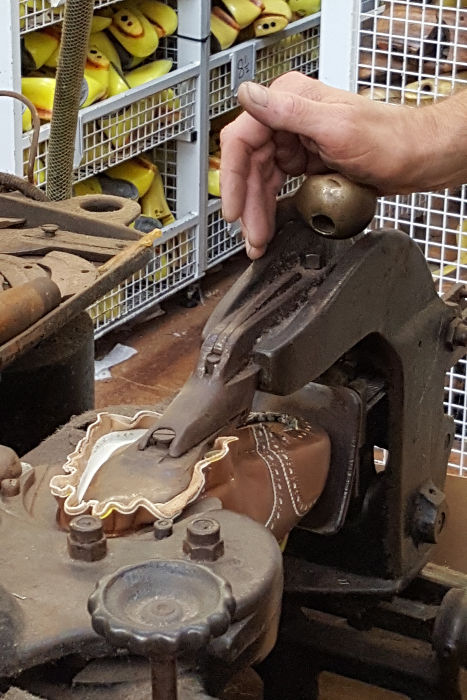Joseph Cheaney & Sons Shoes and Boots 28th July 2016

We’re proud to begin stocking Joseph Cheaney & Sons shoes and boots. Each pair is handmade in England and it takes around a month and a half for each pair to be made, using around 200 hand-tooled operations throughout that time.
The story begins in 1896 with the founding of the company by Joseph Cheaney, a prominent local man in Desborough, Northamptonshire, who was involved with both local government and the local church.
Founded in 1886 by Joseph Cheaney, the company moved to its current premises a decade later in 1896. By the early 21st century Joseph's son Harold had joined the company, causing a name-change to Cheaney & Sons.
World War One kept the company very busy: the British Army in Europe needed vast quantities of sturdy boots and shoes, and Cheaney produced 2500 pairs a week of these. The post-war years were difficult due to the economic dislocation caused by the War, but the company continued to flourish: people will always need footwear.

However, the global Depression of the 1930s presented new challenges. Rising to the occasion, Cheaney & Sons modernised production while keeping the essentially traditional handcrafting nature of the company's methods. Simultaneously, UK operations were expanded in such a way that the company could deliver easily to the UK's various giant conurbations. The enabled the company to survive almost-entirely via the domestic market without needing to export: at the time, international trade was at a low-point, further increasing the expense of exporting.
Following the Second World War, Joseph 'Dick' Cheaney, the original Joseph's grandson, saw that there was a need to expand the company's operations abroad. This would have a dual benefit of allowing the company to reach millions of additional potential customers and also would earn the United Kingdom foreign currency, which was much-needed at the time following the War and the exhaustion of the UK's financial reserves. Parallel to this was Dick's commitment to retaining his father and grandfather's high standards.
This goal of expansion was, at first, achieved indirectly, with the company producing shoes under the name of major retail brands in the UK and USA, rather than using its own brand name. A point arrived, however, when Dick realised that this somewhat oblique strategy could only grow the business so far, and so he decided that an affiliation with another organisation which had existing retail outlets of its own (and also an established export market), was needed.
 Following the company's achievement of the Queen's Award to Industry for Export in 1966, Cheaney & Sons was sold to Church & Company Plc., which lost little time in introducing the 'Cheaney of England' brand in 1967. This represented the first time that the company had sold shoes under its own name. In 1971 the company again won the Queen's Award to Industry for Export.
Following the company's achievement of the Queen's Award to Industry for Export in 1966, Cheaney & Sons was sold to Church & Company Plc., which lost little time in introducing the 'Cheaney of England' brand in 1967. This represented the first time that the company had sold shoes under its own name. In 1971 the company again won the Queen's Award to Industry for Export.
Although exports flagged in the 1970s due to world economic circumstances, Cheaney continued to prosper on the domestic market, partly through innovation: a new system of instocked and branded footwear enabled the company to sell to smaller, independent retailers while promoting their own brand to an ever-growing number of refined and discriminating buyers.
 By the 80s, the export side of the business had recovered and in the early 21st century the company opened its flagship store in London, further increasing awareness of the brand.
By the 80s, the export side of the business had recovered and in the early 21st century the company opened its flagship store in London, further increasing awareness of the brand.
We're delighted to stock Cheaney & Sons shoes - the photographs in this article were taken on our recent visit to the factory.
If you enjoyed this article - please share with your friends...
